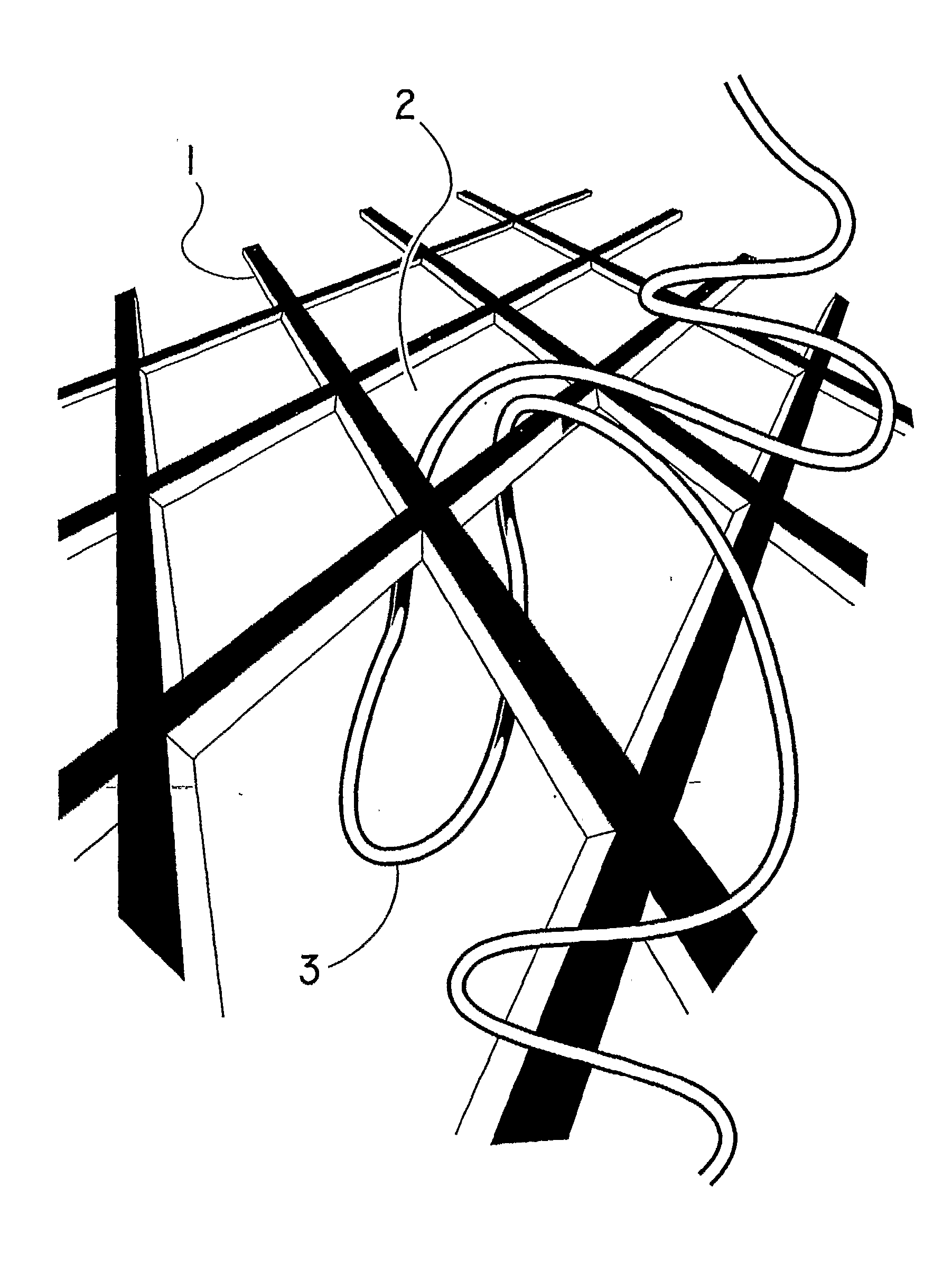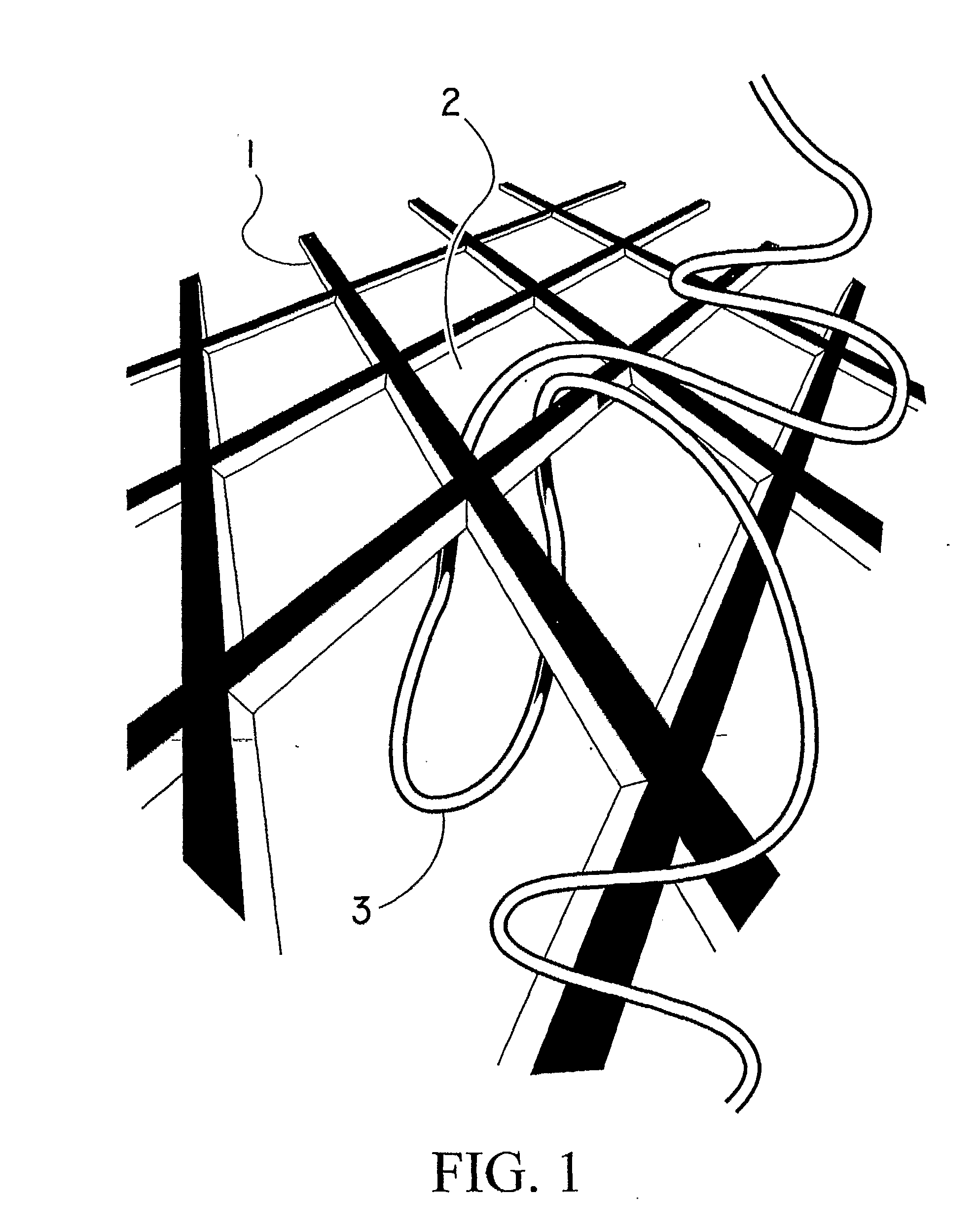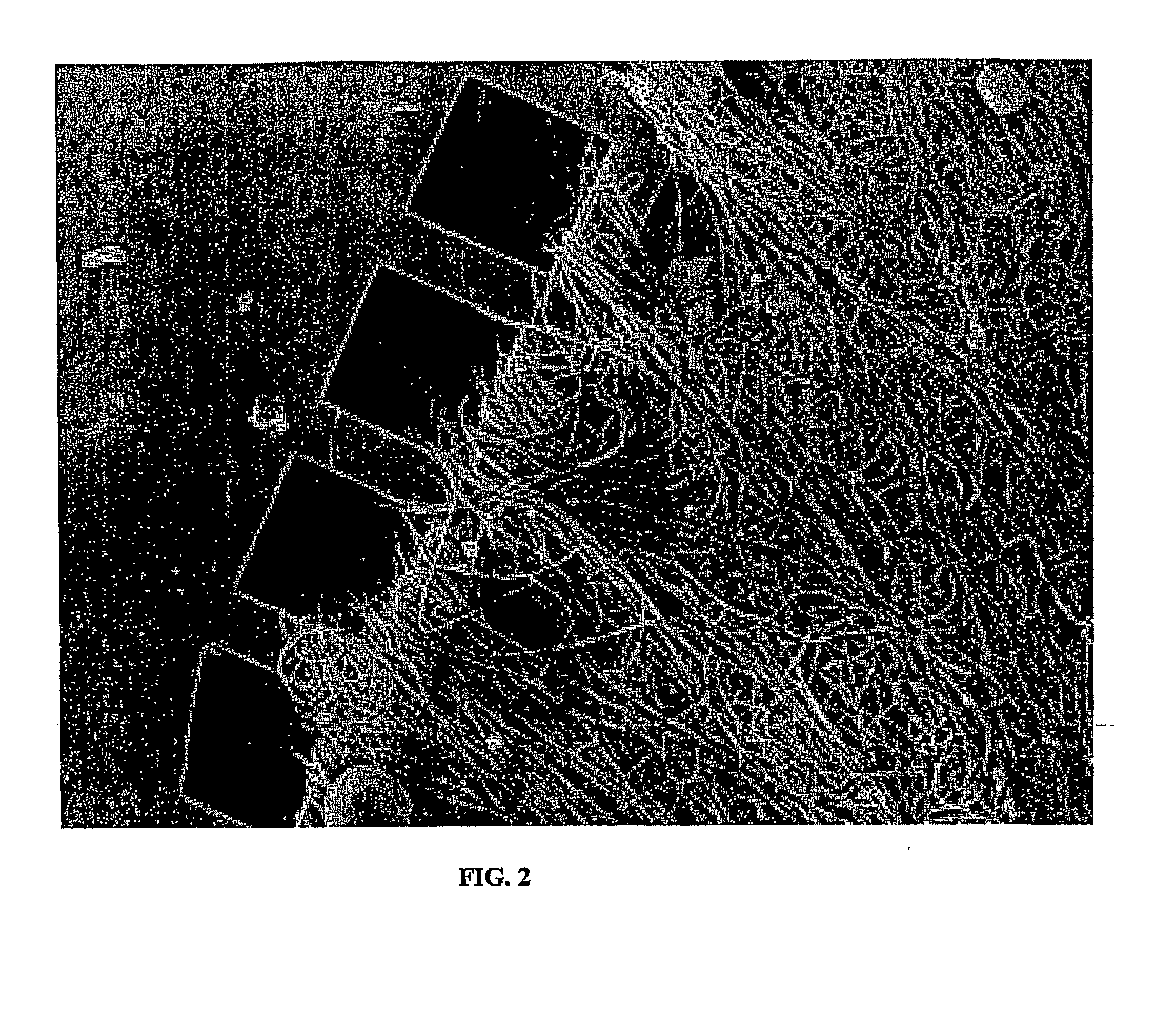Mechanically Attached Medical Device Coatings
a mechanical attachment and medical device technology, applied in the field of mechanical attachment of medical device coatings, can solve the problems of insufficient attachment of nanofiber sheets at the edges, undesirable side effects, and difficulty in holding the nanofiber sheet in pla
- Summary
- Abstract
- Description
- Claims
- Application Information
AI Technical Summary
Problems solved by technology
Method used
Image
Examples
Embodiment Construction
[0018] The present invention is directed to medical devices such as surgical meshes and stents, which are implanted in the body. More particularly, the present invention is directed to coating such devices with nanofibers in a manner that results in the fibers being mechanically attached to the device.
[0019] In general a substrate within the scope of the present invention is a surface. More particularly, it is a surface having structures that may serve as mechanical attachment points. Such structures include holes, pores, gaps, fissures, through-holes, openings, orifices, foramen, fenestrae, bore and the like (hereinafter the foregoing are referred to collectively as “openings”). Any type of implantable medical device known in the art may be coated according to the present invention so long as it provides a suitably structured substrate. Surgical mesh and stents are particularly suitable due to their inherently net-like structure, which readily entangles with the fibers of the pres...
PUM
| Property | Measurement | Unit |
|---|---|---|
| diameters | aaaaa | aaaaa |
| diameters | aaaaa | aaaaa |
| temperature | aaaaa | aaaaa |
Abstract
Description
Claims
Application Information
 Login to View More
Login to View More - R&D
- Intellectual Property
- Life Sciences
- Materials
- Tech Scout
- Unparalleled Data Quality
- Higher Quality Content
- 60% Fewer Hallucinations
Browse by: Latest US Patents, China's latest patents, Technical Efficacy Thesaurus, Application Domain, Technology Topic, Popular Technical Reports.
© 2025 PatSnap. All rights reserved.Legal|Privacy policy|Modern Slavery Act Transparency Statement|Sitemap|About US| Contact US: help@patsnap.com



